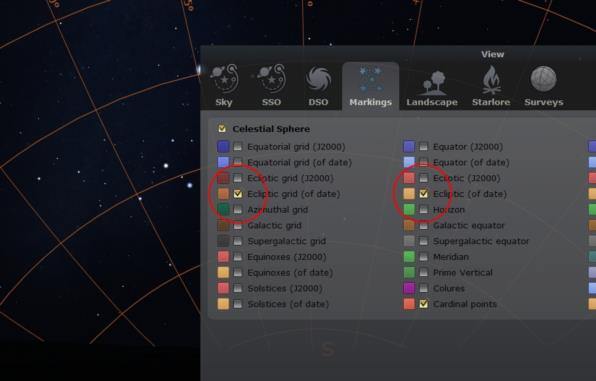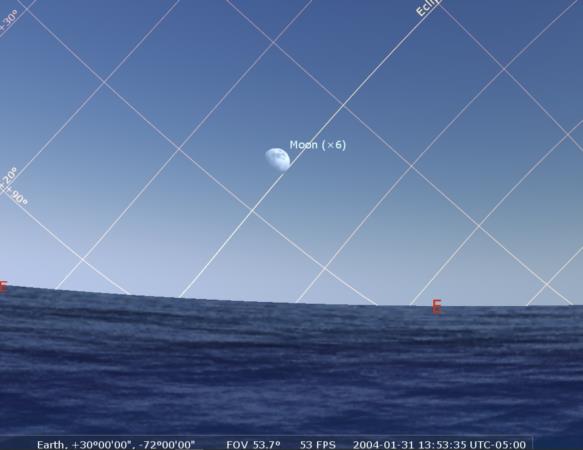
NavList:
A Community Devoted to the Preservation and Practice of Celestial Navigation and Other Methods of Traditional Wayfinding
From: Frank Reed
Date: 2020 Jan 16, 19:20 -0800
You can experiment with this question in Stellarium. The Moon runs along the ecliptic, nearly enough for the issue at hand. The horns of the Moon are very nearly perpendicular to the ecliptic. The process depends on drawing a line through the horns and extending it. Great circles extended perpendicular to the ecliptic are exactly the same thing as lines of ecliptic longitude. So you don't even need to worry about where the Moon is.
Open Stellarium. Go to some latitude that interests you. And then add the ecliptic and the standard ecliptic coordinate grid (at date). You can find that under "Sky and Viewing Options" - "Markings". Then select as in the image below. Turn off the atmosphere so the Sun doesn't confuse things.
Once you have the coordinates up, just follow any of the lines of ecliptic longitude and see where they take you. Any one of them could represent the position of the Moon. Cycle through all hours in a day or cycle through the months of a year. Both show you the various geometric possibilities for the latitude you have selected. It's easy to find examples in the latitude of South Africa where following a line of ecliptic longitude would lead straight to due east or due west on the horizon. That means that the Moon at that position would give you a direction fully 90 degrees away from true north (similarly if you turn it around and try it in a northern latitude and attempt to use the horns to find south).
Below are some examples in the northern hemisphere. A line through the horns to the horizon hits at due east. And for this particular date and time, this is independent of latitude. Notice that the line through the horns is, in fact, essentially parallel to the meridians of ecliptic longitude which makes it easy to extend the line through the horns reliably and accurately.
Frank Reed











